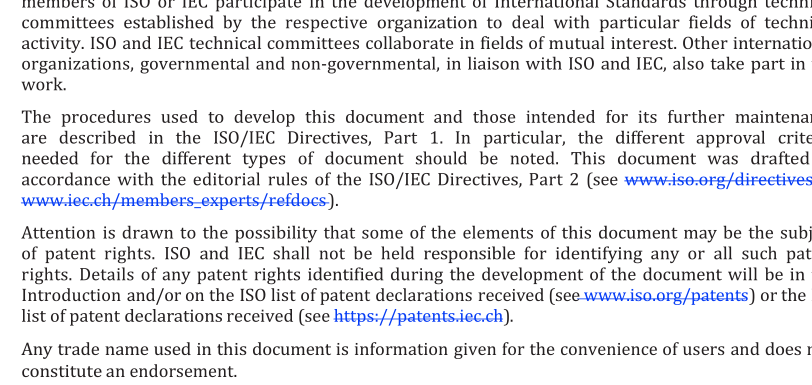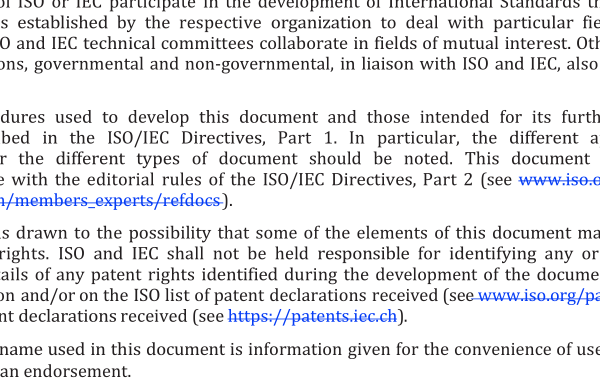ISO IEC 21794-3:2021 pdf download – Information technology — Plenoptic image coding system (JPEG Pleno) — Part 3: Conformance testing.
5 General description 5.1 Overview JPEG Pleno encoders will possibly employ only a fraction of the features specified by ISO/IEC 21794-2. Likewise, some decoders might not implement all the features specified by ISO/IEC 21794-2. It is impossible to provide test cases for all possible configurations of tools that an encoder or decoder can implement. This document provides abstract test procedures for JPEG Pleno encoders and decoders. A developer may designate the features that have been implemented and determine a set of test cases that applies to those features. This document specifies explicit decoder test procedures that aim to ensure the greatest level of interoperability between various implementations of encoders and decoders. These test procedures are used to derive tests that are run for a particular profile. Passing the explicit tests for a given profile allows a decoder to be labelled as “conforming to a given profile”. Even with the explicit decoder tests, it is expected that some decoders will not decode all of the information that was originally incorporated into the codestream by an encoder. Since ISO/IEC 21794-2 defines many auxiliary boxes, it is desirable to allow decoders to ignore information that is not of interest to their target application. This document describes conformance for JPEG Pleno decoders in terms of a system of assurance. These assurances serve to discourage encoders from producing codestreams that will be exceedingly difficult or impossible for a decoder to process, to encourage decoders to provide quality images from any reasonable codestream, and to encourage the use of the flexibility and scalability of JPEG Pleno codestreams.
5.2 Profiles and levels Profiles define a subset of coding techniques, from the ISO/IEC 21794 series, that meet the needs of a given application. Levels provide information about resolution and memory constraints in conforming decoder implementations. Decoders implement the capabilities for all bitstreams encoded for a particular profile. Encoders achieve quality guarantees for particular decoders by encoding bitstreams which meet a particular profile and level definition. If a JPEG Pleno encoder produces a codestream with certain properties, then a decoder of a certain profile and level will be able to produce an image with some defined level of quality. The tests in this document are designed to require a conforming decoder to be capable of decoding all codestreams. Two profiles are labelled as baseline block-based profile (BBBP) and baseline view-based profile (BVBP). These two profiles describe bitstream constraints for an encoder implementing ISO/IEC 21794-1 and ISO/IEC 21794-2. BBBP corresponds to the 4DTM coding tools. Specifically, this profile considers the tools described in Annexes A and B but excludes the tools detailed in ISO/IEC 21794-2:2021, Annexes C, D and E. BVBP corresponds to the 4DPM tools and requires the implementation of all annexes but Annex B . These profiles do not define a hierarchy, and hence are not subsets of each other. In other words, they are independent of each other and no other simple relation holds between the other profiles. Levels define the complexity of the decoding tools and serve as guidance for encoders to produce codestreams that are easily decodable by decoders conforming to a given profile and level. A lower level is a subset of a higher level. Hence, any implementation capable of decoding a higher-level test codestream (TCS) shall be capable of passing the conformance tests for a lower-level codestream of the same profile.
ISO IEC 21794-3:2021 pdf download – Information technology — Plenoptic image coding system (JPEG Pleno) — Part 3: Conformance testing






